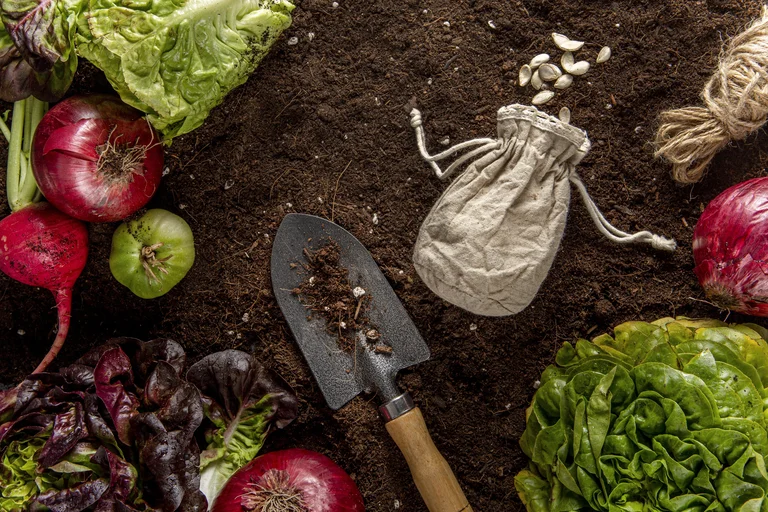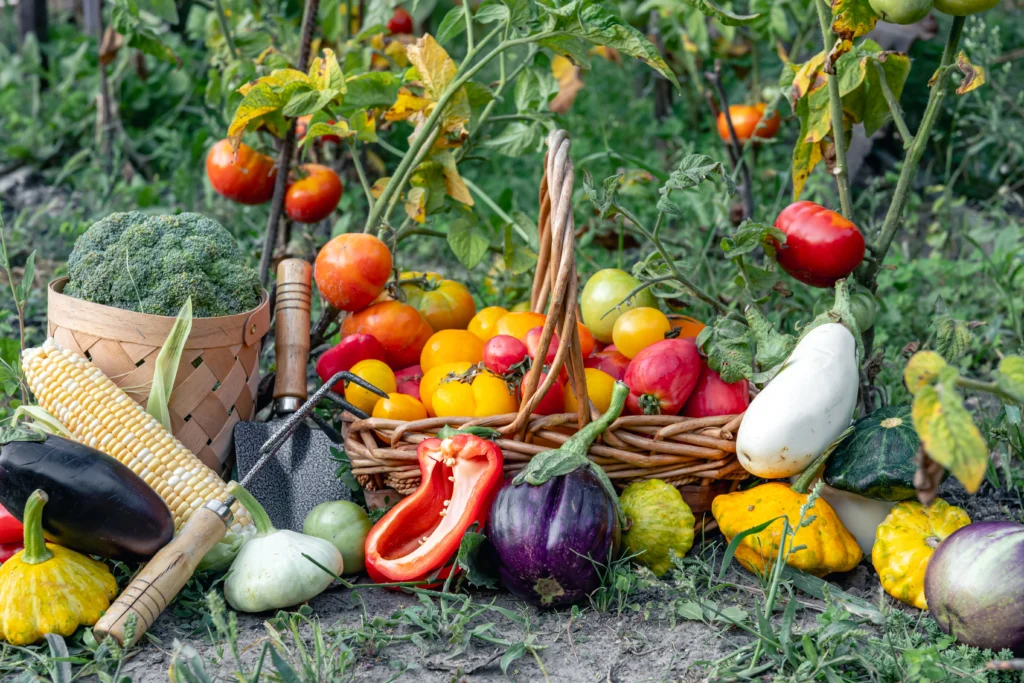
8 Vegetables To Plant In October For A Fall Harvest
As the weather cools and summer gardens fade, many people think it’s too late to grow fresh produce — but that’s not true! October is actually a great month to plant hardy, cool-season crops that thrive in crisp fall air. Whether you’re an experienced gardener or just getting started, there are plenty of 8 vegetables to plant in October that can still bring you a flavorful fall harvest. With the right timing and care, your garden can keep producing delicious greens and root vegetables well into the colder months.
Let’s explore why October gardening can be surprisingly productive and what veggies you can still plant before winter sets in.
Is October a Productive Month for a Vegetable Garden?
October is a wonderful month for gardening, especially in areas where frost arrives late. Many cool-season vegetables thrive in mild temperatures, and shorter days often mean less watering and fewer pests.
If you live in southern or coastal regions of the United States, & parts of the Southeast, you can still enjoy an extended growing season. Even in colder zones, quick-growing vegetables can mature before the first frost hits. The key is to choose fast-maturing or cold-tolerant plants and protect them with row covers or mulch as needed.
- Fewer pests: Insects that attack summer crops slow down in cooler air.
- Better flavor: Many leafy greens taste sweeter after a light frost.
- Less watering: Moisture stays in the soil longer during cool days.
Before you start planting, confirm your USDA Hardiness Zone and local frost date. These inform you of the number of days that remain frost-free.
Greens, root crops, and herbs can all be grown in a full fall garden in zones 8–10 (Southern states like Texas, Florida, and California) through November.
Zones 5–7 (Midwest and Northern states): Give special attention to plants that grow quickly and shield them with cold frames or row covers.
What Vegetables Can You Plant in October?
If you’re wondering what 8 vegetables to plant in October, here are great choices that grow well in cooler weather and can reward you with a late-season harvest.
8 Vegetables You Can Still Plant in October:

1. Spinach:
One of the simplest and most productive vegetables to grow in October is spinach. It can withstand light frost and thrives in cool soil.
Spinach thrives in chilly weather. Plant the seeds about half an inch deep in well-draining, nutrient-rich soil. Keep the soil moist but not soggy, & make sure the plants get at least 4–6 hours of sunlight each day. For gardeners in colder states, try covering the bed with a frost blanket. Spinach can survive temperatures as low as 20°F and still produce delicious leaves through early winter.
Gardening hack: Baby spinach leaves can be harvested in just three weeks, making it an easy success for fall gardeners.
2. Lettuce:
Lettuce grows well in cool weather and prefers temperatures between 50°F and 60°F. Butterhead, romaine, and loose-leaf varieties are the best for October.
Plant seeds in rich, well-drained soil and water lightly but regularly. Lettuce leaves grow crisp and tender in the fall sun, making them perfect for fresh salads. To protect your beds from frost, cover them with a cold frame or lightweight fabric.
You can even grow lettuce in containers or vertical garden towers for a steady supply all season.
3. Kale:
In the fall garden, Kale is a renowned vegetable. Because the cold converts its starches into natural sugars, it not only tolerates cold but also tastes better after frost.
Plant kale in nutrient-rich soil mixed with compost. Give it at least 6 hours of sunlight and consistent moisture. Add mulch around the base to regulate soil temperature and protect roots as nights get colder.
Particularly resilient varieties include Winterbor and Lacinato (Dinosaur Kale). Once established, kale can continue to produce new leaves well into the early winter months and occasionally even through light snowfall!
4. Radishes:
Fall is when radishes grow the fastest, and they can be harvested in as little as 25 to 30 days. For impatient gardeners, these are ideal!
Directly sow seeds in loose soil, place them an inch apart, and water them evenly. Radishes dislike crowds and like cooler weather. They can even interplant them between slower-growing crops such as carrots or kale.
The crunchy, peppery roots are excellent for roasting, pickling, or salads. Radish greens are also edible, which is a benefit that many gardeners overlook.
5. Carrots
Carrots grow in the cool, moist conditions of October. While they take longer to mature, fast-growing varieties like ‘Little Finger,’ ‘Napoli,’ or ‘Short ‘n Sweet’ work well for fall planting.
Prepare loose, stone-free soil and sow seeds directly about a quarter-inch deep. Carrots germinate best when soil temperatures are between 50 and 75°F. Once they sprout, thin them out to give space for root development.
Cover the rows with mulch or leaves before frost—the roots will stay insulated and can be harvested fresh even after the ground cools.
6. Beets:
Beets are another cool-weather crop that produces both delicious roots and nutritious greens. Sow beet seeds half an inch deep and about two inches apart. Keep the soil evenly moist for uniform growth.
Beets prefer slightly acidic soil (pH 6.0–7.0) and full to partial sunlight. In colder zones, covering them with straw or shredded leaves helps maintain warmth around the roots.
One plant can yield two harvests: tender beet greens in the early stages and mature roots below.
7. Garlic:
Garlic is a fall essential, and October offers the perfect time to plant it across most U.S. regions. Plant each clove now to develop roots through winter, and watch it grow into a full bulb by early summer.
Choose a sunny spot with well-drained soil. Plant cloves pointy side up, about 2 inches deep and 4–6 inches apart. After planting, cover the bed with straw, leaves, or mulch to protect it from winter cold.
Garlic practically grows itself once planted, making it a great low-maintenance crop for beginners.
8. Green Onions (Scallions):
Green onions can withstand frost and are quick and simple to prepare. Plant seeds or sets densely in containers or in rows spaced about 1 inch apart. They continue to grow slowly throughout the fall and don’t mind the cold.
For the best flavor, grow them in full sun and well-draining soil. You can start harvesting tender stalks once they reach pencil thickness. In warmer states, scallions can even overwinter for a spring harvest.
Tips for a Successful October Garden:
October gardening requires a slightly different approach than summer planting. Here’s how to get the best results:
1. Check your frost dates: Check your USDA growing zone to determine when frost hits your area. This helps you choose vegetables that can thrive in your local fall climate.
2. Prepare the Soil Properly: Add compost or organic matter to refresh your soil after summer crops. Rich, healthy soil helps roots grow strong before winter sets in.
3. Water Wisely: Plants require moisture, even in cold weather. For healthier roots and deeper growth, water deeply once or twice a week.
4. Use Mulch to Protect Roots: Spread straw or shredded leaves around your plants. Mulch keeps the soil warm, locks in moisture, and controls weeds.
5. Keep an Eye on the Weather: October weather changes fast, so watch for frost alerts. Use row covers or sheets to protect young plants on cold nights.
6. Choose Fast-Growing or Cold-Tolerant Crops: Select resilient vegetables such as radishes, spinach, and kale. These crops do well in cooler fall temperatures and grow rapidly.
7. Give Your Plants Enough Sunlight: Plant your crops where they will receive the most sunlight, ideally six or more hours per day, as the days grow shorter. Use movable containers in your shaded garden to maximize natural light.
8. Extend the Growing Season: Use cold frames or small tunnels to protect your garden from frost. This simple trick extends the life of your vegetables by a few weeks.
9. Harvest at the Right Time: Harvest your crops as soon as possible. Young, tender vegetables are often the best-tasting in the fall. For instance, a light frost makes kale sweeter, and cool soil gives carrots a deeper flavor.
10. Keep the Garden Clean: As you harvest and pull out summer plants, remove any dead leaves or debris. Doing so prevents pests and diseases from overwintering in your soil. A clean garden bed in October ensures a healthier, more productive one next spring.
Fall doesn’t mean your garden has to rest — quite the opposite! By choosing the right vegetables to plant in October, you can enjoy a steady harvest even as the weather cools. Moreover, cool-season crops like spinach, kale, and carrots actually thrive in crisp air, giving you fresher, sweeter flavors.
Planting now keeps your soil active and nourished throughout the winter. By adding mulch, monitoring frost dates, and watering deeply, you keep your fall garden productive for weeks to come.
October gardening extends life in your backyard, allowing you to make the most of mild days before frost arrives. Grab your gloves, plant your seeds, and let your garden show that the growing season doesn’t have to end when the leaves start to fall.
FAQs
Q1 Can you still start a vegetable garden in October?
Ans. October is a great month for planting cool-season crops. Even in cooler regions, you can grow fast-maturing vegetables like radishes, spinach, and lettuce.
Q2. What vegetables grow best in October in the U.S.?
Ans. Kale, spinach, lettuce, carrots, beets, garlic, and radishes all thrive in the cooler fall temperatures typical across most U.S. states.
Q3. How can I protect my fall crops from early frost?
Ans. At night, use garden cloth, plastic tunnels, or row covers. Additionally, a thick layer of mulch aids in controlling the moisture and temperature of the soil.
Q4. Should I fertilize fall vegetables?
Ans. Yes, but lightly. Use organic compost or a balanced fertilizer to give plants a steady nutrient source during shorter days.
Read more related blogs: https://www.climatechallange.com/what-vegetable-is-best-planted-in-august/